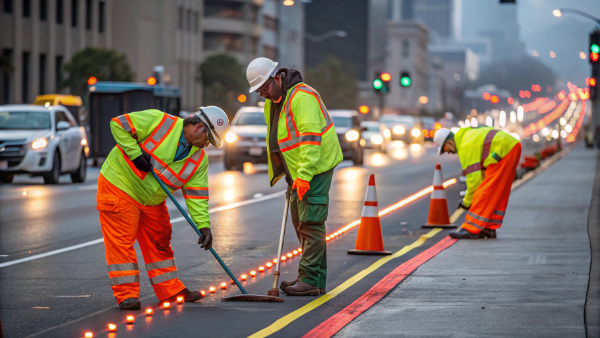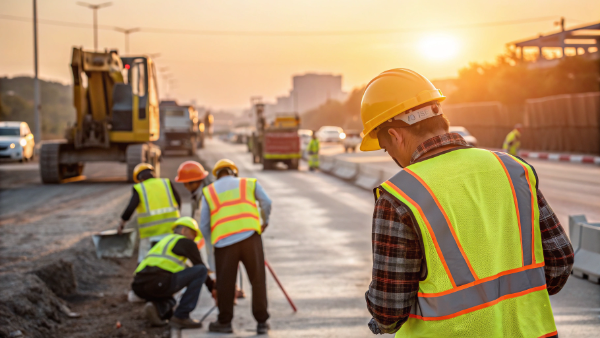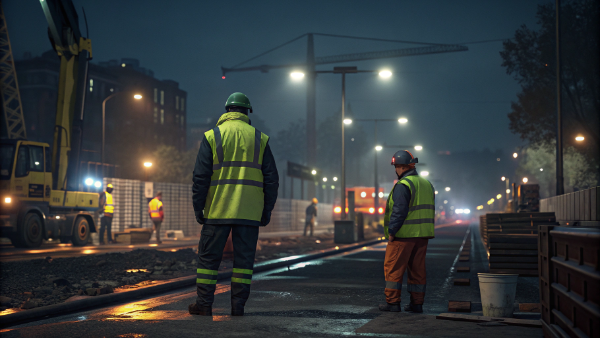Confused by ANSI safety standards? Choosing the wrong class for your high-visibility apparel can risk worker safety and lead to non-compliance fines. Let us make it simple for you.
For high-visibility safety apparel (HVSA), ANSI Class 3 offers more visibility and is considered "better" for workers in high-risk environments. ANSI Class 2 is for workers in lower-risk areas. The choice depends entirely on the job's specific hazards, not just on a number.
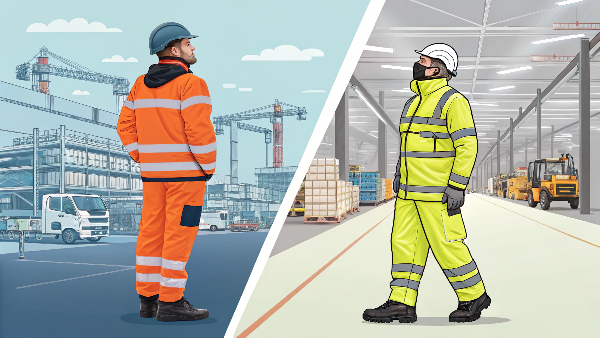
Understanding the details behind these safety classes is key to making the right choice for your team. You need to know more than just which number is bigger. Let's break down exactly what separates these classifications, so you can equip your workers properly and ensure their safety on the job. We'll look at the specific rules and what they mean for you.
What is the difference between ANSI 2 and ANSI 3?
Struggling to see the real difference between Class 2 and Class 3 vests? This confusion can lead to buying the wrong gear, exposing workers to unnecessary risks in different conditions.
The main difference is the amount of high-visibility material required. ANSI Class 3 garments must have more bright background material and more reflective tape than Class 2 garments. Class 3 also requires sleeves, while Class 2 does not, providing greater visibility of the human form.

As a manufacturer since 2007, we produce both classes of garments daily, and the distinction is critical. The ANSI/ISEA 107 standard sets minimum requirements for material to ensure a worker is visible. The goal is to make the human form stand out against complex backgrounds. A Class 2 vest is great for someone working near traffic moving under 50 mph. But for a worker on a highway at night, you need the extra visibility of Class 3. The sleeves on a Class 3 garment make a huge difference in helping drivers recognize a person from a distance. One of our long-term partners, Danny Cheng in California, orders both. His clients need Class 3 for road crews but find Class 2 perfect for warehouse and logistics staff.
Key Material Differences: Class 2 vs. Class 3
| Feature | ANSI Class 21 | ANSI Class 3 |
|---|---|---|
| Use Case | Moderate risk; near traffic < 50 mph | High risk; near traffic > 50 mph |
| Background Material | Minimum 775 in² (0.50 m²) | Minimum 1240 in² (0.80 m²) |
| Reflective Material | Minimum 201 in² (0.13 m²) | Minimum 310 in² (0.20 m²) |
| Sleeves | Not required | Required (short or long) |
Is ANSI class 2 or 3 better?
Choosing between ANSI Class 2 and 3 feels like a simple "good vs. better" choice. But picking the "better" number without context can lead to overspending or under-protecting your team.
"Better" depends on the job's risk level. For maximum visibility in high-risk zones, Class 3 is better. For many jobs with moderate risks, Class 2 is sufficient, more comfortable in heat, and more cost-effective. The best choice is the one that correctly matches the work environment.
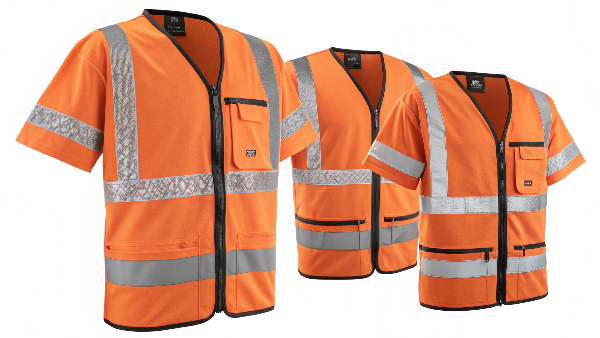
I always advise clients against thinking one class is universally "better" than another. The real question is: "What is the risk level?" A construction worker directing traffic on a 65-mph highway absolutely needs the full-body coverage of a Class 3 jacket. The bright material on the arms helps drivers identify a human shape much faster. However, for a parking attendant or a worker in a warehouse, a Class 2 vest is perfectly suitable. It provides excellent visibility for their environment without the extra bulk or cost of a Class 3 garment. In hot climates, workers often prefer a Class 2 vest for comfort. At Vissafety, we offer advanced cooling fabrics for both classes, but the principle remains: match the gear to the hazard. Over-specifying can be just as inefficient as under-specifying.
What does ANSI class 2 mean?
Does your team really need the highest level of protection? Buying Class 3 for all jobs can be expensive and unnecessary. Understanding Class 2 helps you make a smarter, safer choice.
ANSI Class 2 is the most common level of high-visibility protection2. It is designed for workers exposed to traffic moving between 25-50 mph or who work in environments with moderate risk. It provides a strong balance of visibility, comfort, and cost for many industries.
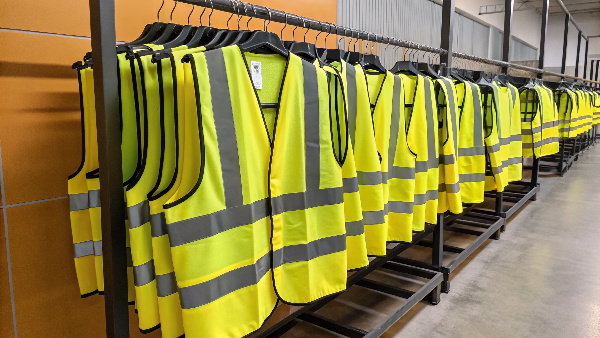
ANSI Class 2 is the workhorse of the high-visibility world. It hits the sweet spot for a huge range of jobs. The standard requires a substantial amount of both fluorescent background material and reflective tape, ensuring workers are seen day and night. However, it doesn't require sleeves, which gives workers more freedom of movement and makes the garments cooler to wear. This is why you see Class 2 vests and t-shirts so frequently.
Who Needs ANSI Class 2?
Workers who typically require Class 2 apparel include:
- Roadside Workers: Where traffic is below 50 mph.
- Survey Crews: Working near roadways but not directly in high-speed traffic.
- Airport Ground Crews: Navigating around moving vehicles and equipment.
- Utility Workers: Performing tasks in or near traffic.
- Warehouse Staff: Operating forklifts and other machinery.
At Vissafety, we manufacture millions of Class 2 vests, as they are essential for so many of our B2B clients in construction and logistics.
What is ANSI 3?
Your workers face high-speed traffic and poor visibility every day. Providing them with standard safety vests might not be enough to keep them safe from the most serious dangers they face.
ANSI Class 33 provides the highest level of visibility protection under the ANSI/ISEA 107 standard. It is required for workers in the most high-risk environments4, such as highway construction zones where traffic speeds exceed 50 mph, or in very low-light, high-hazard conditions.
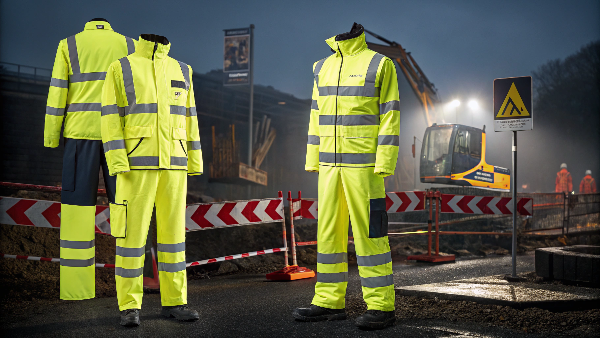
When safety is absolutely paramount and visibility is life-or-death, you need ANSI Class 3. This class mandates the largest amount of background and reflective material5. More importantly, it requires sleeves. Whether short or long, the material on the arms is non-negotiable for Class 3. This is because it defines the full outline of the human body, making it instantly recognizable to drivers of fast-moving vehicles. Think about it: at a distance, a torso-only vest can look like a traffic barrel or a sign. But a torso with arms? That is unmistakably a person. This is why emergency responders, highway flaggers, and nighttime construction crews must wear Class 3. The standard ensures they are visible from a minimum of 1,280 feet, giving drivers crucial time to react.
What is the difference between class 2 and class 3 PPE?
You know the two classes have different material amounts. But this technical detail doesn't explain why you should choose one over the other. This creates uncertainty when outfitting your crew.
The difference comes down to risk assessment for Personal Protective Equipment6 (PPE). Class 2 PPE7 is for risks like moderate-speed traffic. Class 3 PPE is for the highest risks, like high-speed traffic or low visibility, where outlining the entire human form with sleeves is critical for safety.
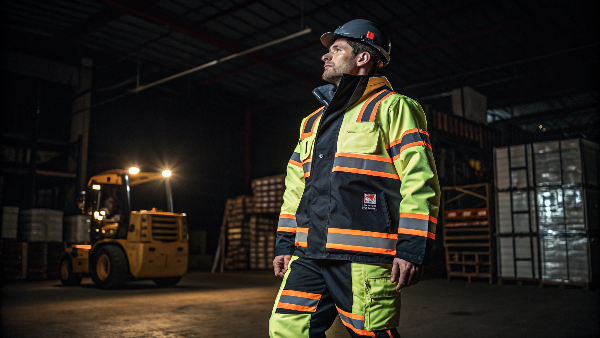
Thinking in terms of "PPE" and "risk" clarifies the choice. All high-visibility clothing is PPE, but you must match it to the specific hazard. The core difference between Class 2 and Class 3 PPE isn't just a few square inches of fabric; it's the level of danger it's designed to protect against. A Class 2 vest protects a worker from being missed in a busy but controlled environment. A Class 3 jacket protects a worker from being struck by a car moving at highway speeds. We've seen an increase in demand for Class 3 from clients like Danny Cheng, whose customers in the logistics industry are adopting stricter safety protocols for yard workers8 who operate at night near moving trucks. It's a direct response to a higher perceived risk.
Risk-Based Selection Guide
| Risk Level | Environment | Recommended PPE Class |
|---|---|---|
| Moderate Risk | Traffic 25-50 mph, warehouses | Class 2 |
| High Risk | Traffic > 50 mph, night work, bad weather | Class 3 |
| Highest Risk | Complex backgrounds, emergency response | Class 3 |
What are Class 3 clothing requirements?
You need to order Class 3 gear, but you're worried about compliance. If the garments you buy don't meet the strict ANSI requirements, your entire investment is wasted and workers are at risk.
Class 3 clothing must have at least 1240 square inches of fluorescent background material and 310 square inches of reflective material. Critically, it must also include this material on the arms, meaning all Class 3 garments (jackets, shirts, or coveralls) must have sleeves.
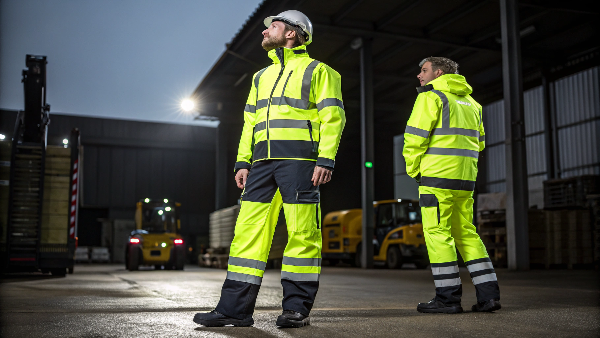
The ANSI/ISEA 107 standard is very specific about Class 3, and as a manufacturer, we follow these rules precisely. It's not just about having a bright color. The requirements are a carefully calculated formula to maximize a worker's visibility from all angles and long distances. The background material makes you visible in the daytime, while the reflective tape makes you shine in headlights at night. The addition of sleeves is the most significant design requirement. This ensures that the entire upper body silhouette is visible. You cannot achieve Class 3 compliance with a sleeveless vest. Some designs combine a Class 2 vest with Class E pants (which have reflective bands) to achieve an overall Class 3 rating for the ensemble, giving workers flexibility.
ANSI Class 3 Garment Breakdown
| Component | Minimum Area (Square Inches) | Purpose |
|---|---|---|
| Background Material | 1240 | Daytime and low-light visibility |
| Retroreflective Material | 310 | Nighttime visibility (reflects headlights) |
| Sleeves | Required | Outlines the human form |
What is safety class 2?
Your job site has risks, but not the extreme hazards of a major highway. You need reliable, compliant safety gear but worry that you're either buying too little or too much protection.
Safety Class 2 is a performance class under the ANSI/ISEA 107 standard. It's designed for workers who need enhanced visibility in environments where they are separated from traffic, or where traffic is moving slower than 50 mph. It's the most widely used class.

Think of Safety Class 2 as the versatile, everyday standard for worker visibility. It provides 360-degree visibility with a large amount of fluorescent and reflective material on the torso. This ensures workers are easily seen by equipment operators and drivers in a variety of conditions. While it doesn't offer the full-body outline of Class 3, it provides a massive leap in visibility compared to regular clothing or even a Class 1 vest (used for minimal risk). Its popularity comes from this balance. It meets the safety needs for a huge number of jobs in construction, utilities, and logistics without the added bulk and cost of Class 3. As a manufacturer, we can customize Class 2 vests with pockets, logos, and different closure types, making it a functional and compliant choice for businesses.
What is class 2 reflective?
It's not enough for a vest to be a bright color. If the reflective tape is low quality or placed incorrectly, the vest is useless at night, putting your workers in serious danger.
Class 2 reflective refers to the specific requirements for the retroreflective material on an ANSI Class 2 garment. This means a minimum of 201 square inches of tape, at least 1.38 inches wide, placed strategically over the shoulders and around the torso to create a visible outline.

The "reflective" part of the standard is just as important as the fluorescent background. This material is what makes a worker visible at night by reflecting a vehicle's headlights directly back to the driver. For Class 2, the standard doesn't just specify an amount of tape; it dictates how it's used. The tape must be placed to show the worker's shape. This is why you see common patterns: vertical stripes over the shoulders and horizontal bands around the midsection. This configuration ensures visibility from the front, back, and sides. As a company that values quality, we only use high-grade reflective materials that meet or exceed ANSI standards for reflectivity even after repeated washing. Low-quality tape can lose its reflective properties quickly, creating a false sense of security for the wearer.
Conclusion
The right choice between ANSI Class 2 and 3 is not about which is better, but which is right for the job. Assess your worksite risks to ensure maximum safety and compliance.
-
Learn more about ANSI Class 2 vests to ensure you choose the right gear for moderate risk environments. ↩
-
Learn about the advantages of high-visibility protection to enhance safety in various work environments. ↩
-
Explore this link to understand the ANSI Class 3 standard, crucial for ensuring safety in high-risk environments. ↩
-
Discover various high-risk environments where safety measures are essential to protect workers effectively. ↩
-
Learn about the significance of reflective material in enhancing visibility and safety for workers in hazardous conditions. ↩
-
Gain insights into performing risk assessments to choose the right PPE for different work environments. ↩
-
Find out when Class 2 PPE is appropriate and how it differs from Class 3 in terms of safety. ↩
-
Explore effective safety protocols that can help protect yard workers, especially in high-risk situations. ↩

